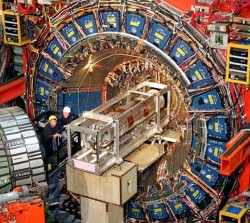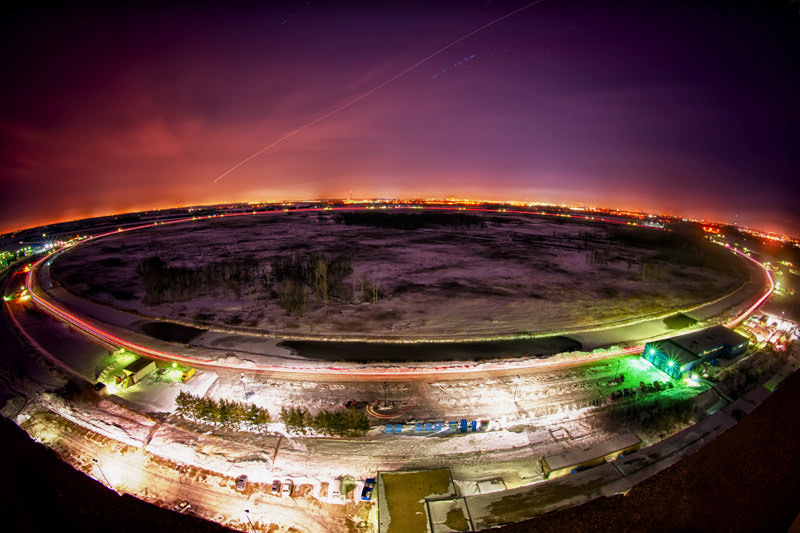Today, researchers from Fermilab announced they have zeroed in further on the mass of the Higgs boson, the controversially-called “God particle”* that is thought to be the key to all mass in the Universe. This news comes just two days before a highly-anticipated announcement by CERN during the ICHEP physics conference in Melbourne, Australia (which is expected by many to confirm actual proof of the Higgs.)
Even after analyzing the data from 500 trillion collisions produced over the past decade at Fermilab’s Tevatron particle collider the Higgs particle has not been identified directly. But a narrower range for its mass has been established with some certainty: according to the research the Higgs, if it exists, has a mass between 115 and 135 GeV/c2.
“Our data strongly point toward the existence of the Higgs boson, but it will take results from the experiments at the Large Hadron Collider in Europe to establish a discovery,” said Fermilab’s Rob Roser, cospokesperson for the CDF experiment at DOE’s Fermi National Accelerator Laboratory.
 Researchers hunt for the Higgs by looking for particles that it breaks down into. With the Large Hadron Collider at CERN, scientists look for energetic photons, while at Fermilab CDF and DZero collaborators have been searching for bottom quarks. Both are viable results expected from the decay of a Higgs particle, “just as a vending machine might return the same amount of change using different combinations of coins.”
Researchers hunt for the Higgs by looking for particles that it breaks down into. With the Large Hadron Collider at CERN, scientists look for energetic photons, while at Fermilab CDF and DZero collaborators have been searching for bottom quarks. Both are viable results expected from the decay of a Higgs particle, “just as a vending machine might return the same amount of change using different combinations of coins.”
Fermilab’s results have a statistical significance of 2.9 sigma, meaning that there’s a 1-in-550 chance that the data was the result of something else entirely. While a 5-sigma significance is required for an official “discovery”, these findings show that the Higgs is running out of places to hide.
“We have developed sophisticated simulation and analysis programs to identify Higgs-like patterns,” said Luciano Ristori, co-spokesperson of the CDF experiment. “Still, it is easier to look for a friend’s face in a sports stadium filled with 100,000 people than to search for a Higgs-like event among trillions of collisions.”
“We achieved a critical step in the search for the Higgs boson. Nobody expected the Tevatron to get this far when it was built in the 1980s.”
– Dmitri Denisov, DZero cospokesperson and physicist at Fermilab
Nearly 50 years since it was proposed, physicists may now be on the edge of exposing this elusive and essential ingredient of… well, everything.
See the Fermilab press release here.
Read Fermilab’s FAQs on the Higgs boson
Top image: The Tevatron typically produced about 10 million proton-antiproton collisions per second. Each collision produced hundreds of particles. The CDF and DZero experiments recorded about 200 collisions per second for further analysis. Sub-image: The three-story, 6,000-ton CDF detector recorded snapshots of the particles that emerge when protons and antiprotons collide.(Fermilab)
*And why is it often called the God particle? Because of this book.

